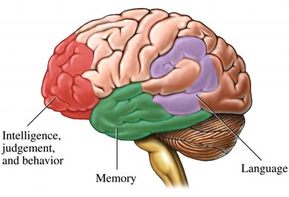In Love with a Stranger
What would happen if,  one day, the girl you loved suddenly forgot who you were? This is exactly what happens in the 2012 blockbuster “The Vow”, based on the book by Nicholas Sparks. The two main characters, Leo and Paige, get into a car accident in the beginning of the movie, from which Paige acquires amnesia and forgets everything that has happened in the recent years, including her entire marriage with Leo. The last memory she has is from her college years, when she was engaged to another man and living a completely different life. Leo and Paige’s relationship is thrown into turmoil as she struggles to go on living a life she does not remember. This turns into an epic story of love in the face of hardship, as Leo continues to love Paige as he watches her slip away from him. Paige never regains her memory, even after everything they go through, but eventually everything works out for the best.
one day, the girl you loved suddenly forgot who you were? This is exactly what happens in the 2012 blockbuster “The Vow”, based on the book by Nicholas Sparks. The two main characters, Leo and Paige, get into a car accident in the beginning of the movie, from which Paige acquires amnesia and forgets everything that has happened in the recent years, including her entire marriage with Leo. The last memory she has is from her college years, when she was engaged to another man and living a completely different life. Leo and Paige’s relationship is thrown into turmoil as she struggles to go on living a life she does not remember. This turns into an epic story of love in the face of hardship, as Leo continues to love Paige as he watches her slip away from him. Paige never regains her memory, even after everything they go through, but eventually everything works out for the best.
What is wrong with this portrayal of amnesia?

Although this makes for a great movie, the symptoms of Paige’s amnesia are very unrealistic when examined closely. Paige has retrograde amnesia, meaning that she does not have memories from before the accident. However, she can remember most her life up until a few years before the crash. It would be very unlikely that she would forget only a certain chunk of time (and all semantic and procedural memories within it) without forgetting anything else. Paige can remember procedural memories (memory for skills) from when she was young but cannot remember recent ones, shown when she cannot find her way home after leaving to get food. She also cannot remember basic art skills even though in the years before the accident she became a great artist. Memory is a complex function that deals with many different parts of the brain, but semantic long-term memories (conceptually-based knowledge) are normally stored in one place, as are procedural long-term memories. It is also highly debatable whether one can have retrograde amnesia with no evidence of anterograde amnesia, which is a loss of memories after an accident or episode. Paige shows this as she can form new memories after the accident and functions normally throughout the rest of the movie. In reality, this loss of retrograde without loss of anterograde has only been observed in amnesia arising from psychiatric illness and mental breakdown. There is little to no evidence that this sort of amnesia can be caused by head trauma. It is hypothesized that the hippocampus are involved in permanent storage of certain kinds of memory and they are very important in processing for declarative memory (memories that can be consciously accessed). This hypothesize would assume that all memories of a certain type would be stored in one place, and would be lost together if this storage center was damaged.

Is there any truth in the story?
She does show some symptoms that amnesiacs normally show, such as her intact short-term memory. Her procedural memory is also intact, aside from the most recent memories, which is present in most amnesiacs.
In conclusion, although it is great movie, one must keep in mind that it is just a movie. There are many different kinds of amnesia that share some universal symptoms and the life of an amnesiac is much different than that portrayed in the movie.
References: